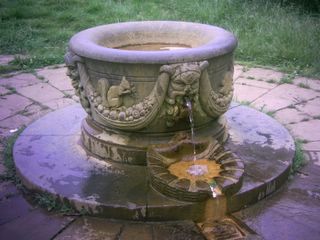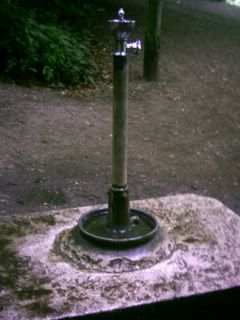Golders Green is a suburb based on the crossroads of Finchley Road and Golders Green Road. Home to an important London Jewish community I went on Sunday so the shops would be open. Not all were so maybe a Saturday visit would also be worthwhile.
Golders Green is also home to Hampstead Garden Suburb. The Suburb (note capital S), as it is known to its intimates, is an experiment in town planning initiated by Dame Henrietta Barnett and planned by Parker and Unwin, pioneers of garden cities.
Dame Henrietta was the wife of Canon Barnett, who had a parish in Whitechapel. She envisaged a co-operative community of all social classes in a well planned environment which was within a 2d tube ride of central London. After much opposition, which seemed to centre on the fact that she was a woman, she persuaded the landowners to sell the land and allow it to be developed by both copartnership societies (fully mutual housing co-operatives) and private development. This development was strictly controlled aesthetically by Parker and Unwin.
Now the suburb is home to the rich and super rich with cottages for sale at around 250K and the Bishops Avenue containing the highest priced dwellings in London. However anyone can wander at will through the woodlands and open spaces and the townscape is still enchanting. The model for inter war council estates it has flourished!
Famous residents included Barbara Windsor, the blonde beauty of carry on films who lived in previously in Golders Green.
The Heath Extension is an open space dedicated to field sports, which gives on to tranquil woodland, although a group of people indulging in bicycle motocross were told off by one of the Corporation of London staff as I went through. There were ponds with yellow flowers growing in them.
I came out of this section at Spaniards Lane and took a picture of the Spaniards Inn. The inn has associations with Dick Turpin the highwayman and is ideally situated as the two lane, excessively busy, road narrows where the inn is. A good piece of business planning on the innkeeper’s part. I did not call at the inn but walked to Kenwood House. There is an 18th Century Bath house here fed by a chalybeate spring which English Heritage restored a few years ago. The water looks rather murky, perhaps it needs people frolicking in it to keep it fresh.
The grounds of Kenwood were crowded so I left there and walked on the heath for a bit, pausing to admire the views of Canary Wharf and the Gherkin, both clearly visible. I walked down to the actual chalybeate spring on the heath.

Chalybeate spring Hampstead Heath
 Chalybeate is iron water, with a few other minerals and is the same type of water that feeds Tonbridge Wells.
Chalybeate is iron water, with a few other minerals and is the same type of water that feeds Tonbridge Wells.There’s no reason not to walk past the men’s bathing pond so I did- a bevy of beauties. Originally part of the Fleet river the bathing ponds are a bit cold for my taste but the views are good.
One feature of the heath is that there are drinking fountains. As the song goes, There are drinks and girls all over London- I can direct you to the drinks- and here one is.

There are drinks and girls all over London- here's one of the drinks

Having got a bit lost here I ended up near Hampstead Heath Railway station, so decided to walk up through Hampstead. I walked past the house occupied by the Poet Keats, before he set out on his final journey to Italy, and past the proprietary chapel of St John, Downshire Hill. This is the only proprietary chapel in London and was built in 1818 for the posh residents of the surrounding area. I wanted to take a picture of this small, pretty but imposing church but there was a police line and a tent nearby and I’m not prepared to risk arrest for taking photographs at a crime scene. The church will be there a long time after the police have left.
Another building on Downshire Hill is stark in its modernity. The Hopkins House is entirely glazed but hardly noticeable from the street. Built in 1975 it is uncompromisingly modernist.
Jack Straw’s Castle, another pub with highwayman associations (not the former home secretary Jack Straw) is now converted into luxury flats, and I was too tired to do a circuit of the Pergola on this part of the heath so I went home.


No comments:
Post a Comment